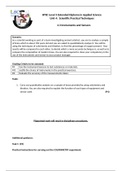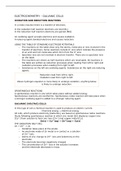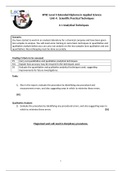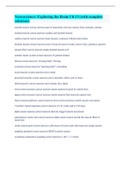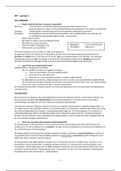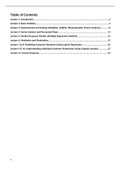Resumen
Summary UNIT 4 P4
- Grado
- Institución
1. Carry out quantitative analysis on a sample of brass provided by using colorimetry and titration. You are also required to explain the function of each type of equipment and sensor used. ...
[Mostrar más]
